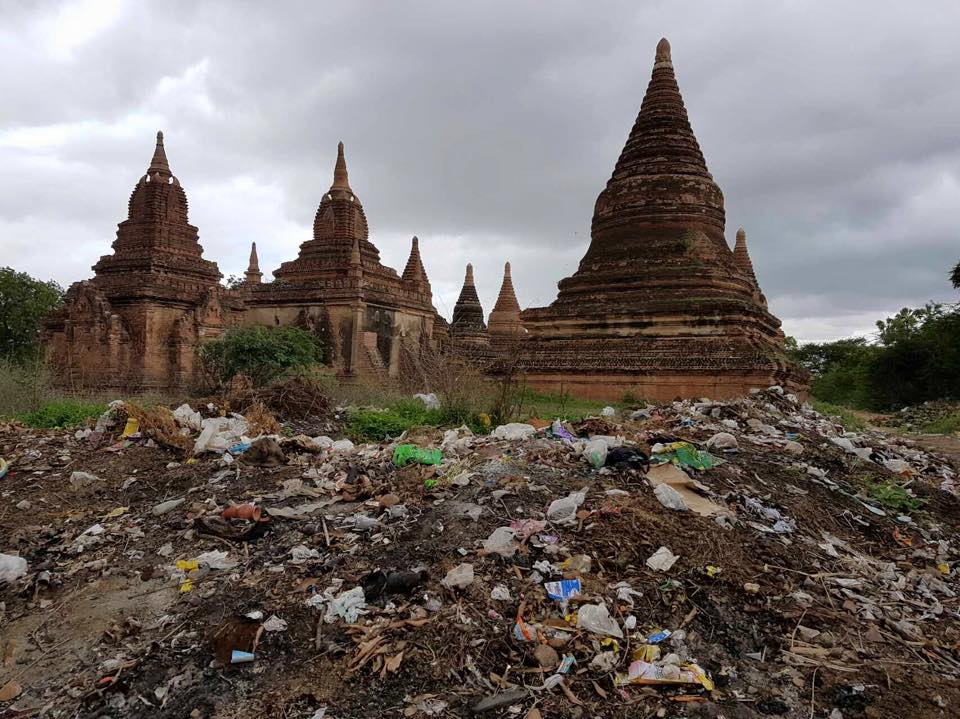The mystic lure of the ancient pagodas in Bagan attracts thousands of visitors every year. And with Burma’s tourist figures set to increase dramatically in the near future, steps must be taken to ensure the historical site is conserved and protected.
Such an influx of tourists inevitably means tons of garbage: plastic bags, bottles, food wrappers, straws, Styrofoam cartons.
But local volunteers in the town have banded together to form what they call the Bagan Plastic Campaign. Every Saturday, dozens of conscientious townsfolk meet near the centre of the archaeological zone and split into groups to comb the area, picking up litter and trash as they go.
“We are trying to promote tourism in the Bagan archaeological zone, and having a clean environment plays a vital role in attracting international tourists. It is also relevant to regional development,” said Tin Htoo Maung, the head of Nyaung-U district administration.
“As we live in a significant cultural heritage site, among buildings of archaeological value, we must pay attention to preserving the elegance of these buildings, but also clean up the trash that is causing such an eyesore on the landscape.”
Tin Htoo Maung urged pilgrims and tourists to help conserve Bagan.
Among the participants in the campaign, initiated in June 2014, are environmentalists, staff from local businesses, tour guides, hotel staff, civil society organisation members and some 40 employees from the Nyaung-U municipal offices.
The group’s Facebook appears to show photographs of the volunteers burning the rubbish directly in front of some ancient temples. DVB has so far been unable to solicit a response from the campaigners about whether the rubbish that is being collected is incinerated, recycled or disposed of in a more eco-friendly manner.
In February last year, Bagan was voted Second Best City in the World by readers of Wanderlust Travel Magazine. And in 2014, the backpackers’ bible Lonely Planet accorded the site this romantic moniker: “The world’s most likely time and place to get a ‘Yes’ to a wedding proposal is during sunrise at Bagan”.
[related]
However, the spectacular complex of 2,000 temples and pagodas, built between the 10th and 14th centuries, was burdened by years of mismanagement during the military junta era, a time when Burma was off-limits to foreign tourists.
Bagan has been consistently rejected by the United Nations Educational Scientific and Cultural Organization (UNESCO) as a World Heritage Site due to the then government’s irresponsible tampering with the sacred archaeological sites. Classification as a World Heritage Site would qualify Bagan for millions of dollars in funding. UNESCO was particularly disconcerted about much of the restoration work that was contracted using concrete and other modern materials, and the shoddy repair work that made many of the temples look artificial. The UN agency also expressed dissatisfaction that authorities had allowed a golf course to be built close to the ancient temples, and a 50-foot tower that would allow tourists panoramic views.
Burma’s tourism authorities estimate that over a third of all international visitors to the country visit Bagan during their stay.



